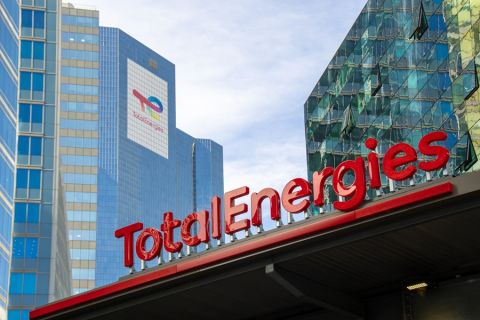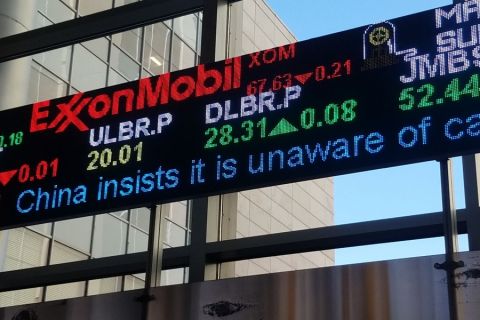Oil prices slid on Feb. 8 to extend falls from the previous session, as a big increase in U.S. crude inventories and a slump in Chinese demand implied that global oil markets remain oversupplied despite OPEC-led efforts to cut output.
Brent crude futures were trading at $54.81 per barrel (bbl) at 6:57 a.m. CT (12:57 GMT), down 24 cents from their previous close. West Texas Intermediate (WTI) crude was at $51.77/bbl, down 40 cents.
The declines came on the back of unexpectedly big increases in U.S. fuel inventories, as reported by the American Petroleum Institute (API) on Feb. 7.
Crude inventories rose by 14.2 MMbbl in the week to Feb. 3 to 503.6 MMbbl, compared with analysts' expectations in a Reuters poll for a 2.5 MMbbl increase.
"If the official data from the U.S. Department of Energy were to show a similar inventory build ... U.S. crude oil stocks would be catapulted to almost a record level," Commerzbank said in a note.
The U.S. Energy Information Administration (EIA) publishes its official data later on Feb. 8.
Gasoline stocks rose by 2.9 MMbbl, compared with expectations for a 1.1-MMbbl gain.
Goldman Sachs analysts said that the data pointed to "U.S. gasoline demand falling sharply by 460,000 bbl/d year on year in January, with such declines only previously [seen] during recessions."
The EIA said Feb. 7 it expects U.S. crude production to grow by 100,000 bbl/d to 8.98 MMbbl this year, 0.3% less than previously forecast, but expects production to jump by 550,000 bbl/d in 2018.
Growing U.S. supplies undermine a deal led by OPEC to curb output and support prices.
But OPEC, for the time being at least, is not greatly concerned with rising U.S. output.
"The market is gradually accommodating for shale oil as well as shale gas—the demand is healthy. With that continuous demand increase, I think all available oils are going to be accommodated," Qatari Energy Minister Mohammed al-Sada told Reuters on Feb. 8.
Prices also came under pressure from signs of slowing demand from the world's biggest energy consumer.
China's 2016 oil demand grew at its slowest pace in at least three years, Reuters calculations based on official data showed.
China's implied oil demand growth eased to 2.5% in 2016, down from 3.1% in 2015 and 3.8% in 2014, led by a sharp drop in diesel consumption and as gasoline usage eased from double-digit growth.
Recommended Reading
TotalEnergies Eyes Suriname FID by Year-end 2024
2024-04-29 - France’s TotalEnergies and U.S. partner APA Corp. look to place their long lead orders ahead of a final investment decision related to their joint development offshore Suriname in Block 58.
Diamondback Stockholders All in for $26B Endeavor Deal
2024-04-29 - Diamondback Energy shareholders have approved the $26 billion merger with Endeavor Energy Resources.
ProPetro to Provide eFrac Services to Exxon’s Permian Operations
2024-04-29 - ProPetro has entered a three-year agreement to provide electric hydraulic fracturing services for Exxon Mobil’s operations in the Permian Basin.
Keeping it Simple: Antero Stays on Profitable Course in 1Q
2024-04-28 - Bucking trend, Antero Resources posted a slight increase in natural gas production as other companies curtailed production.
Oil and Gas Chain Reaction: E&P M&A Begets OFS Consolidation
2024-04-26 - Record-breaking E&P consolidation is rippling into oilfield services, with much more M&A on the way.





